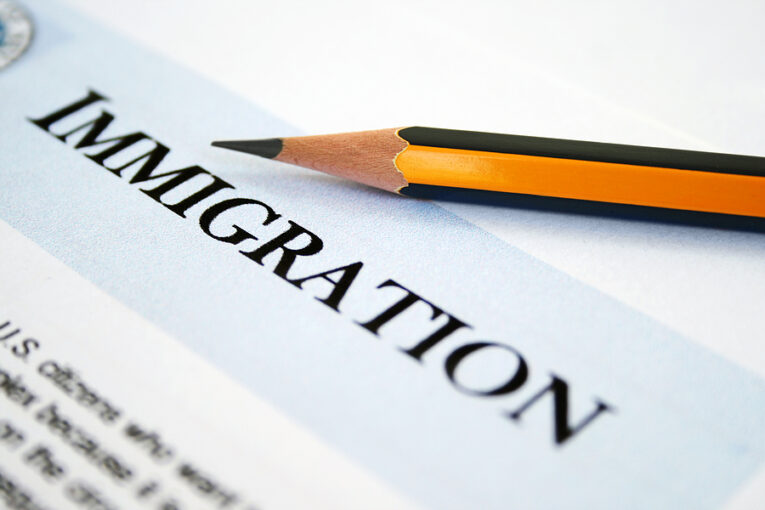Understanding Green Card Eligibility
As experienced immigration attorneys, we understand the profound impact that obtaining a green card can have on your life. It represents the culmination of dreams, sacrifices, and unwavering determination to build a future in the land of opportunity.
In this comprehensive guide, we aim to demystify the intricate web of immigration laws and share our insights, forged from years of navigating the complexities of the green card process. Together, we’ll embark on a journey that will equip you with the knowledge and confidence to traverse this path with clarity and resilience.
Eligibility: The Foundation of Your Journey
The pursuit of lawful permanent residency begins with an understanding of the various eligibility categories. These pathways are like doors, each leading to a unique set of requirements and qualifications. Let’s explore the most common avenues:
Family Ties: The Bond That Connects
For many, the strongest ties are those of family. A U.S. citizen or lawful permanent resident can sponsor certain family members, including spouses, children, parents, and siblings, for permanent residency. This pathway celebrates the profound significance of familial bonds and their vital role in our society.
Employment Opportunities: Embracing Talent and Expertise
The United States is a beacon for professionals and skilled workers from around the globe. Employers can sponsor foreign nationals with specialized skills, education, or work experience through various employment-based visa categories. This avenue recognizes the immense contributions of talented individuals to the economic and cultural fabric of our nation.
Humanitarian Programs: Upholding Compassion and Justice
In times of extraordinary circumstances, the United States extends its embrace to those in need. Refugees and asylees fleeing conflict or persecution can apply for permanent residency after meeting specific criteria. Additionally, victims of human trafficking and certain crimes may be eligible for visas that can eventually lead to a green card, reflecting our nation’s commitment to upholding human rights and providing shelter to the vulnerable.
Determining your eligibility category is the first step towards mastering the green card process. With clarity on the appropriate pathway, you can proceed with confidence, armed with the knowledge to navigate the journey ahead successfully.
Initiating the Application: A Meticulous Endeavor
Once you have identified your eligibility category, it’s time to embark on the application process. This stage requires diligence, attention to detail, and adherence to the guidelines set forth by the United States Citizenship and Immigration Services (USCIS).
Navigating the Official USCIS Guidelines
The USCIS website, accessible through a secure.gov domain, is your trusted ally in this endeavor. Here, you’ll find comprehensive details on the process, including eligibility verification, forms to be submitted, and procedural steps specific to your situation.
Online Application: Embracing Digital Convenience
The USCIS offers the convenience of an online application platform. This user-friendly interface allows you to complete and submit the appropriate forms electronically, streamlining the submission process and reducing the risk of errors.
To initiate the online application, follow these steps:
- Create a USCIS online account.
- Complete the appropriate green card application form for your category.
- Pay the necessary fees online.
- Submit the application along with any supplemental documents.
Required Documentation: Building a Solid Foundation
A successful green card application hinges on providing complete and accurate documentation. While the specific requirements may vary based on your eligibility category, common documents include:
- Proof of eligibility (e.g., birth certificates, marriage certificates, employment offer letters)
- Biographical documents (e.g., passports, identification cards)
- Supporting evidence (e.g., affidavits, letters of recommendation)
Here’s a table outlining some of the most commonly used forms:
| Form Number | Description | Purpose |
| I-130 | Petition for Alien Relative | Family sponsorship |
| I-140 | Immigrant Petition for Alien Workers | Employment opportunities |
| I-485 | Application to Register Permanent Residence or Adjust Status | Adjustment of status |
Gathering all necessary documentation before initiating the application process is crucial for a seamless experience. If you encounter any issues or uncertainties, don’t hesitate to consult the official USCIS resources or seek guidance from a trusted immigration attorney.
Navigating the Process: Patience and Perseverance
The green card application process is a journey that demands patience and perseverance. As your dedicated guide, we will share insights on managing potential delays, understanding renewal procedures, and maintaining compliance with immigration laws.
Checking Application Status: Staying Informed
Once your application is submitted, you can monitor its progress through the USCIS’s online portal. By entering your receipt number, you’ll gain access to real-time updates, allowing you to stay informed and prepared for the next steps.
Dealing with Delays: A Proactive Approach
Delays can occur for various reasons, such as high processing volumes or the need for additional evidence. If you experience significant delays, the USCIS provides guidance on how to inquire about delayed applications. In some cases, seeking assistance from an immigration attorney may be necessary to resolve prolonged delays efficiently.
Replacement and Renewal: Maintaining Your Status
Green cards are typically valid for up to 10 years. However, life’s unexpected events may necessitate a replacement or renewal. The USCIS website offers comprehensive resources on how to proceed with these requests, detailing the necessary forms, documents, and steps.
To help you navigate these situations, here’s a quick reference table:
| Type of Request | USCIS Form | Applicable Fee |
| Green card renewal | I-90 | Varies |
| Replacement Green Card | I-90 | Varies |
| Status Update Request | N/A | Free |
Remember, maintaining compliance with immigration laws and regulations is paramount throughout this process.
Legal Framework and Compliance: Upholding Integrity
Navigating the legal complexities of obtaining a green card requires a deep understanding of the immigration laws and policies that govern this process. Compliance with these regulations is non-negotiable, and I’ll help you navigate this aspect with the utmost care and diligence.
- Immigration Laws and Policies: The USCIS website serves as a comprehensive resource, outlining the policies, regulations, and legislation that shape the green card process. It’s essential to familiarize yourself with these guidelines to ensure your application aligns with the current legal framework.
- Inadmissibility and Unlawful Presence: Certain conditions, such as criminal history, immigration fraud, or residing in the U.S. without legal authorization, can lead to inadmissibility or severe penalties. Understanding and addressing these factors is crucial for the success of your green card application.
- Rights and Responsibilities: Holding a green card is a privilege that comes with specific rights and responsibilities. As a green card holder, you’ll be entitled to live permanently in the U.S., work, and access certain social benefits. However, you must also abide by all U.S. laws, pay taxes, and maintain compliance with immigration policies.
Achieving Permanent Residency: The Pinnacle of Your Journey
The ultimate goal of the green card process is to obtain permanent residency in the United States. This section will guide you through the various pathways to achieve this coveted status, including adjustment of status, consular processing, and understanding the visa bulletin and priority dates.
Adjustment of Status: A Path from Within
For certain immigrants already residing in the U.S., the adjustment of status process allows them to apply for lawful permanent resident status without leaving the country. This is accomplished through the submission of Form I-485. The availability of visas, however, is dependent on the visa bulletin and priority dates.
Here’s a quick overview of the steps involved:
- Determine Eligibility
- Wait for a priority date to become current.
- File Form I-485
Consular Processing: The Path from Abroad
If you’re outside the U.S. or ineligible for adjustment of status, consular processing is the method you’ll follow. This involves applying for a green card through a U.S. consulate in your home country. The process includes submitting a visa application, attending a medical examination, and participating in a visa interview.
Here’s a brief overview of the steps:
- Submit the visa application.
- Complete Medical Examination
- Attend a visa interview.
Visa Bulletin and Priority Dates: Timing is Key
The U.S. Department of State publishes the Visa Bulletin monthly, which includes updated priority cut-off dates that control visa availability. Understanding and tracking these priority dates is crucial for the timing of your green card application process.
The bulletin features two tables:
| Table | Purpose |
| A | Final Action Dates (when visas may be issued) |
| B | Filing dates (when applicants may submit preliminary documentation) |
Regularly checking the Visa Bulletin and staying informed about which table the USCIS is currently using for accepting I-485 applications is essential for navigating this process smoothly.
Whether you’re adjusting your status or applying from outside the U.S., patience, attention to detail, and a clear understanding of legal procedures are paramount.
Post-Green Card Pathways: Securing Your Future
Obtaining a green card is a significant milestone, but it also unlocks several pathways that can further secure your future in the United States. These pathways offer stability, additional opportunities, and a sense of belonging in your new home.
Citizenship Prospects: A Permanent Bond
As a green card holder, you become eligible to apply for U.S. citizenship through naturalization. The timeline for eligibility is typically after five years of permanent residency, or three years if you’re married to a U.S. citizen. Becoming a U.S. citizen offers numerous advantages, including the ability to maintain dual citizenship with your country of origin.
Deportation Protection: A Safeguard for Your Future
Possession of a green card grants you protection from deportation, as your status is considered permanent by the U.S. government. This safeguard provides peace of mind, allowing you to establish roots and build a life without the constant fear of being removed from the country.
However, it’s important to note that certain violations of the law can lead to the revocation of this status. Maintaining compliance with immigration laws and seeking legal guidance when necessary is crucial to preserving your deportation protection.
Access to Federal Benefits: A Safety Net for Your Well-Being
As a green card holder, you’ll have access to various federal benefits that are essential for your well-being and integration into U.S. society. These benefits include student financial aid for education, Social Security benefits for retirement and disability, and more.
By understanding and navigating these post-green card pathways effectively, you’ll be better equipped to thrive in the United States and secure a prosperous future for yourself and your loved ones.
Conclusion: Embracing the Journey with Confidence
The green card process is a journey that demands resilience, perseverance, and a deep understanding of the intricacies involved. As experienced immigration attorneys, we’ve witnessed countless individuals navigate this path, each with their own unique story and aspirations.
Throughout this guide, we’ve aimed to equip you with the knowledge and insights necessary to tackle the challenges that may arise. From understanding eligibility categories to navigating the application process, managing potential delays, and maintaining compliance with immigration laws,.
Embrace this journey with confidence, for it is a testament to your determination and belief in the American dream. Together, we will unlock the doors to a future filled with possibilities, where you can contribute your talents, skills, and perspectives to the rich tapestry of our nation.





